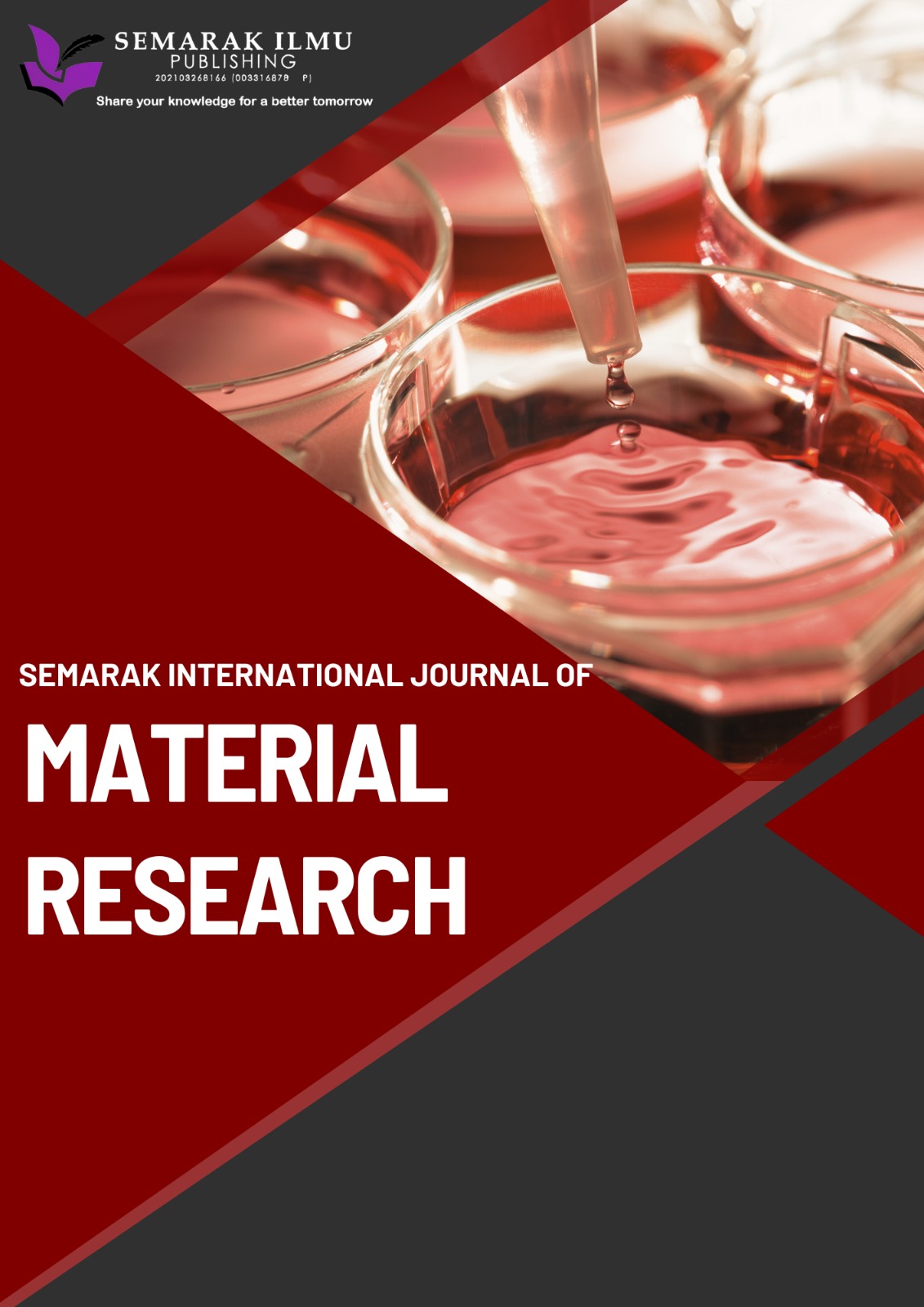Structural and Mechanical Properties of Zinc-Strontium-Lithium Phosphate Glass Doped with Carboxymethyl Cellulose
DOI:
https://doi.org/10.37934/sijmr.1.1.2640Keywords:
Phosphate glass, FTIR, RamanAbstract
A series of phosphate glasses doped with carboxymethyl cellulose (CMC) was synthesized using the melt-quenching technique to explore their structural and mechanical properties. The composition (40–x) P₂O₅-ZnO-Li₂O–SrO-xCH₂CO₂H (0.0 ≤ x ≤ 0.5 mol%) was characterized using Fourier Transform Infrared (FTIR) spectroscopy, Raman spectroscopy, ultrasonic testing, and Vickers hardness measurements. Results revealed that the addition of CMC caused subtle structural changes, enhancing the glass network's compactness and stiffness. Mechanical analysis showed improved hardness, elasticity, and self-cleaning properties, making this system a viable candidate for applications in food processing and healthcare, where surface contamination is a concern. This study highlights the potential of biodegradable, non-toxic phosphate glass for innovative and sustainable applications.













